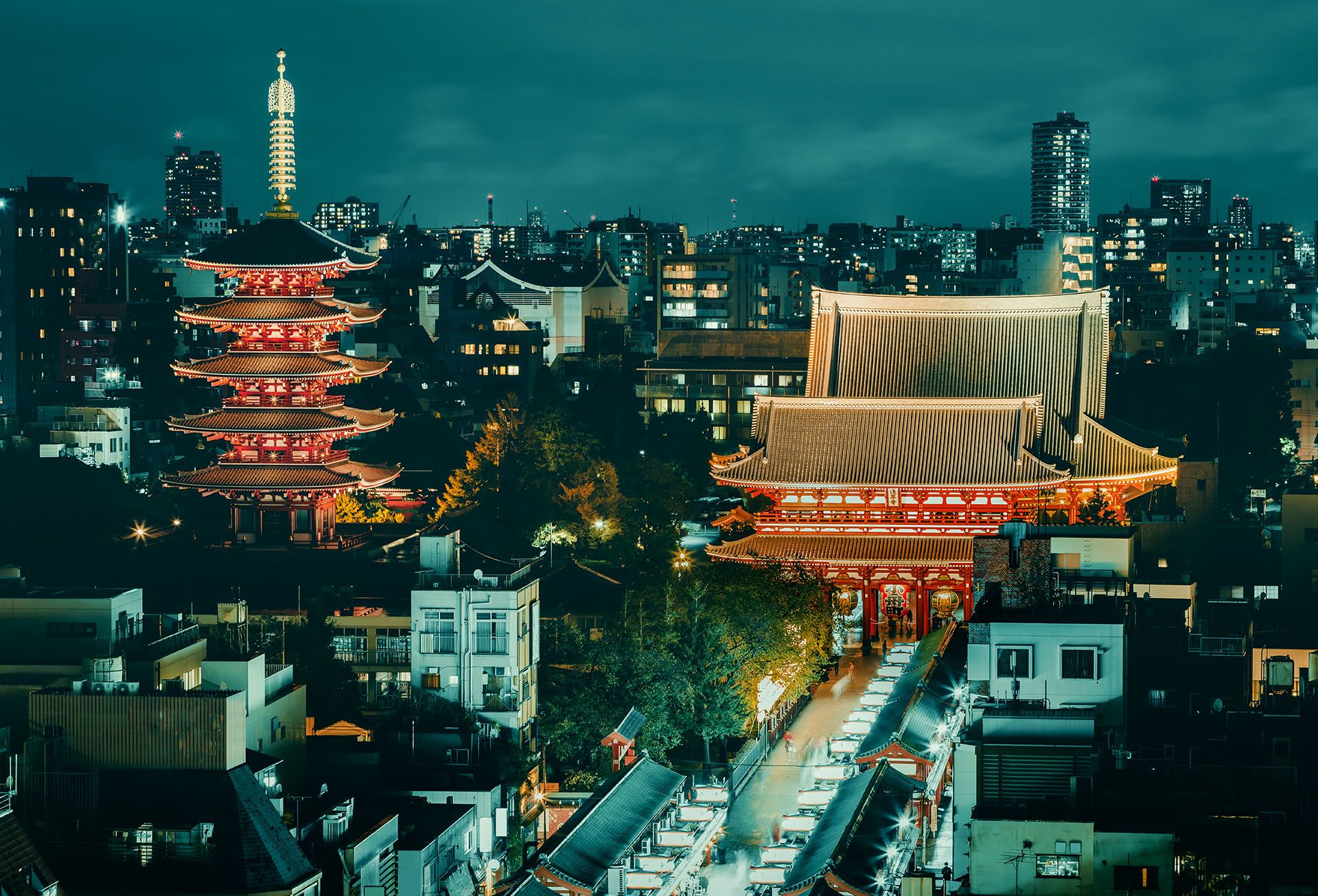7 day Tokyo itinerary
If you have a little more time, your first visit to Tokyo can be even more rewarding. Not sure how long to stay in Tokyo to make the most of it? A week gives you the chance to dive deeper into the city’s vibrant neighborhoods.
Start your 7-day adventure in Shibuya, where you’ll experience the iconic Shibuya Crossing and visit the famous Hachikō statue. Take in panoramic city views from Shibuya Sky, then explore local boutiques and sample Tokyo’s incredible street food.
On day two, immerse yourself in the creative atmosphere of Harajuku, the epicentre of youth culture and fashion. Stroll along Takeshita Street, sample the famous sweet pancakes and visit the tranquil Meiji Shrine. End the day on architecturally stunning Omotesando Avenue, lined with designer shops.
On day three, head to the historic centre of Asakusa, where you'll explore Sensoji Temple and stroll along Nakamise shopping street. After a traditional lunch, enjoy a relaxing boat ride on the Sumida River, which will take you to the futuristic Odaiba district for an evening sightseeing tour.
Day four is dedicated to the art and culture of Roppongi. Visit the Mori Museum of Contemporary Art and the upscale Roppongi Hills neighbourhood. As night falls, dive into Roppongi's bustling nightlife or relax in a cosy jazz cafe.
On day five, travel back in time to the charming Yanaka neighbourhood. Visit local temples and Yanaka Cemetery, shop for traditional crafts at Yanaka Ginza, and finish with a sake tasting at a local brewery.
Spend day six at the Odaiba Entertainment Centre, starting with the mesmerising TeamLab Borderless digital art museum. Visit the shopping centres, relax on the beach and enjoy lunch overlooking the illuminated Rainbow Bridge.
End your visit to Tokyo at the tranquil Imperial Palace in Chiyoda, wandering through its lush gardens. Spend the last day exploring the National Museum of Modern Art and the chic Marunouchi district, perfect for last-minute shopping. Book this trip.





